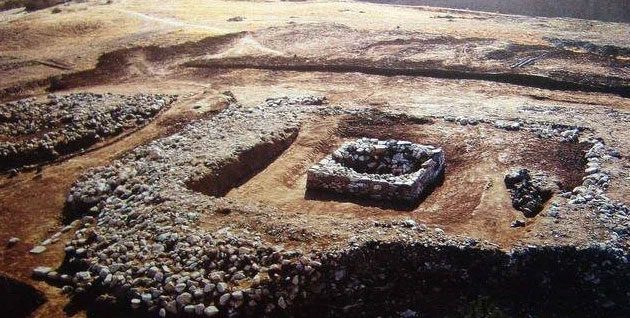A Newly Discovered Pyramid is More Special Because It is Linked to a Famous Chinese Legend.
The “brand” of pyramids has long been associated with Egypt in the minds of many people. In reality, there are pyramids or pyramid-like structures in various places around the world. For instance, the pyramid at Chichen Itza in Mexico is a remnant of the Maya civilization; the pyramids of Setius in Italy and the Kohl pyramid in Cambodia are deep within the jungle.
This is just a small part of the pyramids found globally. Additionally, in China, pyramids have also been discovered at the Hongshan Cultural Site.
The Hongshan Culture originated from Inner Mongolia and is considered one of the “cradles” of Chinese civilization, dating back approximately 6,000 years. It was discovered in 1921 and is known for its advanced jade carving craftsmanship.
Recently, a peculiar pyramid-like structure was uncovered at the Hongshan Cultural Site, astonishing the international archaeological community. Why does a pyramid exist in China?
On the surface, it appears to be a mound of earth, but after excavation, it was revealed to be a man-made structure. If we only consider the above-ground portion, its diameter is estimated to be nearly 40 meters, with a height of 16 meters. This earthen mound is surrounded by two stone rings, with the outer stone ring having a diameter of about 100 meters and the inner stone circle measuring 60 meters in diameter.
The top of the structure features a conical peak, consisting of three stone circles, with a distance of 10 meters between each circle and each stone standing 1 meter tall. At the summit of the mound, between the stone circles, there are over 30 stone piles stacked upon one another. In terms of layout and shape, it closely resembles the pyramids of Egypt, and is therefore referred to as the Chinese Pyramid.

The pyramid structure discovered at the Hongshan Cultural Site. (Photo: Sohu)
The pyramids of Egypt serve as tombs for the Pharaohs.
So, what exactly were the pyramids in China used for? There is a viewpoint suggesting that this was a bronze smelting site. The reason is quite simple: when first discovered, 1,500 red copper vessels were found at the top of the mound.
To protect the bronze smelting furnace, all the utensils were buried and covered with earth. However, another perspective argues that if it were merely for bronze smelting, it wouldn’t require such effort to create a large structure. Therefore, experts believe it must have had other purposes.
Some suggest that it could be an ancient royal tomb, but the scale of the tomb would not be so small, and no one would smelt bronze on a tomb. Others speculate it might be an altar for worshiping heaven and earth. Eventually, a clue led experts to a discovery.
One kilometer away, there is a temple featuring a life-sized statue of a goddess. Based on the statue’s characteristics and historical records, people believe this is the goddess Nüwa from Chinese mythology.
In other words, this is a place dedicated to the worship of Nüwa at the Hongshan Cultural Site. The bronze vessels bear similarities to the legend of Nüwa repairing the sky with stones in the folklore.
- Scientists Took 50 Years to Decipher the Content of a 2,600-Year-Old “Bamboo Slip” Letter from a Young Soldier
- The Second Largest Buddha Statue in the World Suddenly Appeared After 700 Years, the Reason for Its Disappearance Remains Unanswered
- A Man Discovered the Largest 6-Ton Pearl in the World, But No One Dares to Buy It!




















































